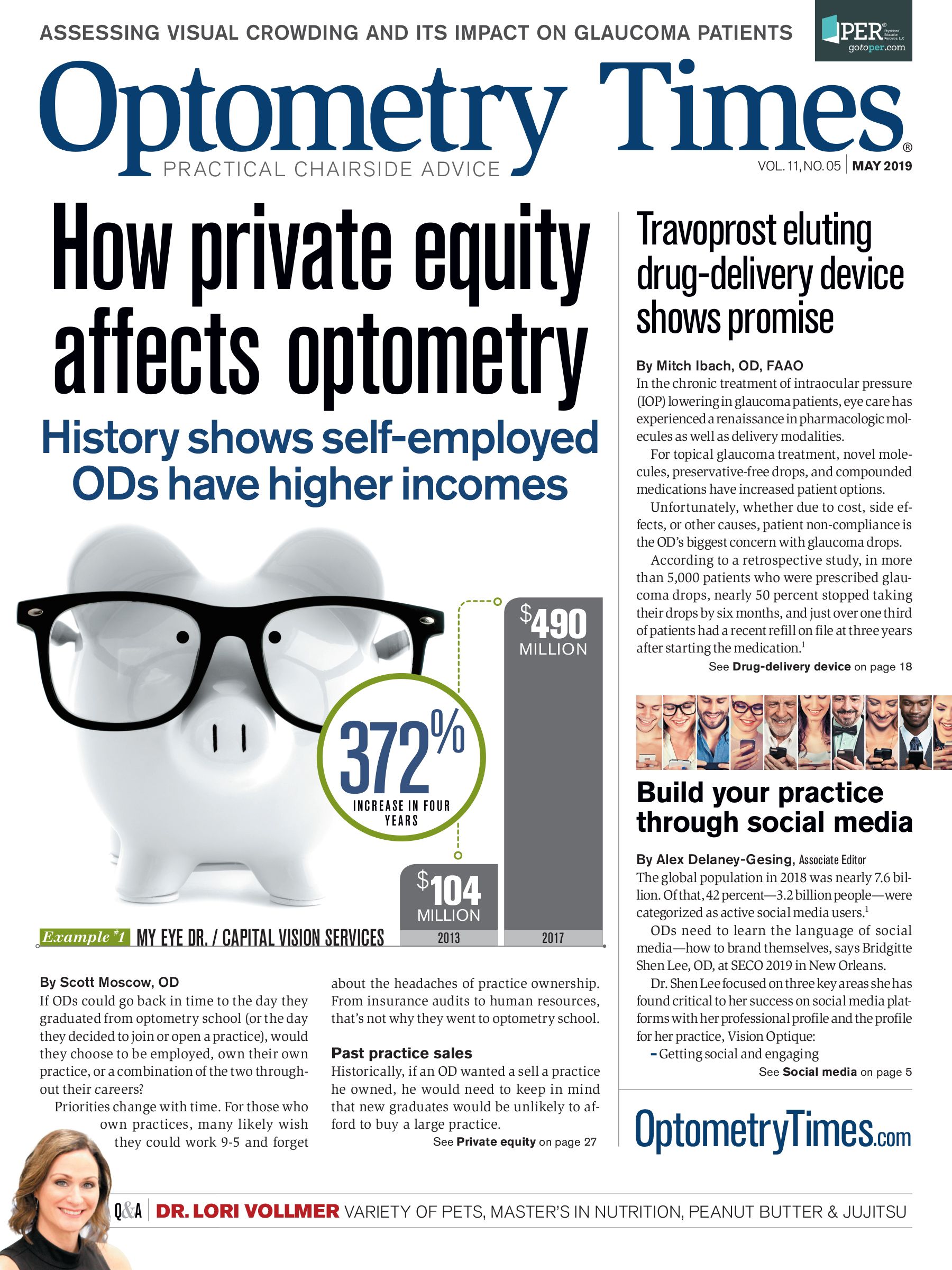Revamp your patient handoff


Have you ever found yourself in the parking lot searching for the patient to whom you have forgotten to give an artificial tear sample? How about the time you winced when your staff member was discussing a patient’s blepharitis while scheduling his follow-up appointment at the front desk? That might be awkward-and worse yet, unlawful.
What about the typical vague response we have heard when asking a patient which staff member helped them during pretesting (“You know, the guy with the green eyes.”)?
These are but a few examples of a patient encounter gone wrong.
Related: How staff can help differentiate your practice
Assessing the process
The process and procedures of a comprehensive eye exam are numerous-from reception, pretesting, and refraction to physical exam, diagnosis, and treatment discussions. No wonder patients and doctors may forget certain aspects of the treatment plan. How many times have you realized too late that you sent a patient out into the sunny afternoon without post-mydriatic sunglasses?
During the patient encounter, there are often many providers involved. The transfer of care from one provider to the next may lead to misunderstood or omitted information and plans. Poor patient handoffs may lead to potential Health Insurance Portability and Accountability Act of 1996 (HIPAA) violations, poor treatment plan compliance, and a perceived lack of professionalism.
Previously in our office, once the exam was completed the doctor would escort the patient to the front office to find the appropriate staff member to assist with the next step. With two dispensing tables in the optical, many times both were taken if optical was the patient’s next location, as it often is.
Many times the patient assumed she was finished when she left the exam room, and she was ready to walk out the door. Often the patient did not look for new eyewear, did not hear about sunglasses on sale, or receive her blepharitis informational sheet. She was awkwardly summoned back to the reception desk to pay her copay, then left without any semblance of executing the treatment plan.
We had to find a better way.
After researching other methods of patient handoff, it became clear that there was no need to recreate the wheel.
Related: Creating culturally competent patient care
The first step
An effective patient handoff will enhance the transfer of care from one provider to another while establishing a personal connection with the next provider. So, what exactly are we handing off?
We are handing off the diagnosis and treatment plan that needs attention. It may consist of a new prescription for ophthalmic lenses, new contact lens trials, a new contact lens care solution routine, a glaucoma eye drop prescription, an educational handout, and the all-important “next step.” The “next step” will specifically define what the patient is to do next.
One of our challenges was to decide where the handoff should take place. By handing off in the exam room, we would improve HIPAA compliance compared to discussing the treatment plans at the front desk or in the optical dispensary. No longer do we discuss any aspect of the visit outside of the exam room.
Handing off in the exam room also bolsters the status of our technical staff. Although our staff members are crossed trained and American Optometric Association (AOA) Certified Paraoptometrics, there is nothing like transferring care and discussing details of the treatment plan with the technician in the presence of the patient to solidify the technician’s role as an eyecare provider and not “the guy with the green eyes.”
Related: Teaching skills for successful technicians
Clear communication
How does each provider know when it is time for the handoff in the exam room? There are many options to signal the handoff, including beepers, hallway lighting systems, iMessage, phone intercom, texting, and the use of colored plastic flags outside the exam room door.
We decided to notify our technicians that we are ready to hand off the patient by printing out all applicable treatment plan documents to the printer at their station. This prompts the technician to bring the documents and prescriptions to the exam room to be briefed on the treatment plan.
Patient compliance has improved notably now that the patient hears the plan reviewed with the technician during the handoff. In addition, there is less room for misinterpretation of the plan by the patient and technician, leading to fewer mishaps due to miscommunication.
After identifying our shortcoming in patient and practice management, we held an office meeting during which the staff and doctors were presented the what, when, why, and how the new patient handoff procedure would work. After a 20-minute presentation followed by role-playing various exam encounters with each doctor and technician practicing patient handoffs, we implemented the process the same day.
All doctors and staff are convinced the new patient handoff process was the right fit for the providers and patients. The role play exercise was useful in fine-tuning our delivery during the handoff and working on different scenarios which may come up.
Related: How to see 50 patients a day at your practice
The results
Although our goal was to honor HIPAA, tighten treatment plans, and promote professionalism, we have discovered several unintended bonuses:
• We no longer search for staff to hand off patients
• We have increased our revenue per exam by 12 percent
• Patients have been more receptive to the treatment plans
A few times we hit a snag when the doctor was ready for the handoff, but the technician was not available. Each time another technician stepped in for the handoff. Admittedly, pinch-hitting works best if all staff members are fully cross-trained in reception, pre-testing, dispensing, frame styling, and optician duties.
From a practice owner’s perspective, this has been one of the highlights of my practice management decisions. I think I got this one right. The feeling of a job well done in the exam room is always rewarding, and now I can hand off my patient in a way which does not unravel the progress made. I know the patient understands the treatment plan. I know that my staff understands the treatment plan.
Related: Wow patients with good impressions and positive interactions
In the past, it was too easy to perform an exam and miss some of the finer details. Did I remember to review the proper contact lens solution use? Did I get the message across how the progressive office lens design that I prescribed works? Did I forget to give the patient that sample artificial tear?
Managing the patient’s experience through his time in the office is a common goal of most doctors. If you have ever been walked into an Apple retail store, you will be managed starting with a greeting at the front door. The late Steve Jobs insisted on owning and operating retail stores for this exact reason. He wanted to manage the customer’s experience from start to finish.1 Likewise, we can do the same.
Although our intention is to examine, diagnose, and manage vision and eye health, I have discovered that the outcomes of the treatment plans are likely to be enhanced as a result of a professional patient handoff.
Read more patient care articles here
Dr. Luce received his doctorate in optometry in 1990 from the Pacific University College of Optometry. He is an adjunct associate professor at Pacific University College of Optometry. Dr. Luce has served on the Oregon Optometric Physicians Association Board of Directors and has written and lectured on practice management, pediatric eye care, and contact lens topics. Since retiring from his role as a clinic leader for Professional Ski Instructors of America, he enjoys snow skiing, fishing, stand-up paddling, and boating. He has no disclosures.
eyeskidoc@aol.com
References:
1. Solomon M. How to think like Apple about the customer experience. Forbes. Available at: https://www.forbes.com/sites/micahsolomon/2014/11/21/how-apple-thinks-differently-about-the-customer-service-experience-and-how-it-can-help-you/#6645f4c827c9. Accessed 4/17/19.

Newsletter
Want more insights like this? Subscribe to Optometry Times and get clinical pearls and practice tips delivered straight to your inbox.